IN PICTURES: A window on the past is preserved for the future

In February 2019, the Senate moved to the Senate of Canada Building, a former train station built in 1912. The Senate will occupy this temporary location while Parliament’s Centre Block — the Senate’s permanent home — is rehabilitated.
Although Centre Block is shuttered for rehabilitation work, Canadians can still experience its art and architecture through the Senate’s immersive virtual tour.
It’s a window fit for a queen — two of them, actually.
But on May 13, 2020, daylight filtered through its colourful stained glass for the last time in what could be a very long while as conservators carefully removed the Senate foyer’s Diamond Jubilee Window to keep it safe during the rehabilitation of Centre Block.
The window celebrates the milestone reached by Queen Elizabeth II and Queen Victoria 115 years apart: 60 years on the throne.
Kelowna, B.C. artists Christopher Goodman and Angela Zissoff created the artwork, which was installed over the Senate doors to Centre Block in 2012 as Queen Elizabeth II celebrated her diamond jubilee. It was familiar work for Mr. Goodman — he had helped his father with House of Commons windows as a young man in the 1970s.
The window consists of 500 pieces of glass, much of it mouth-blown. The design was approved by the Queen herself; she unveiled a mock-up in a 2010 ceremony at Rideau Hall.
Take a look behind the scenes at what went into removing and safeguarding this modern masterpiece.
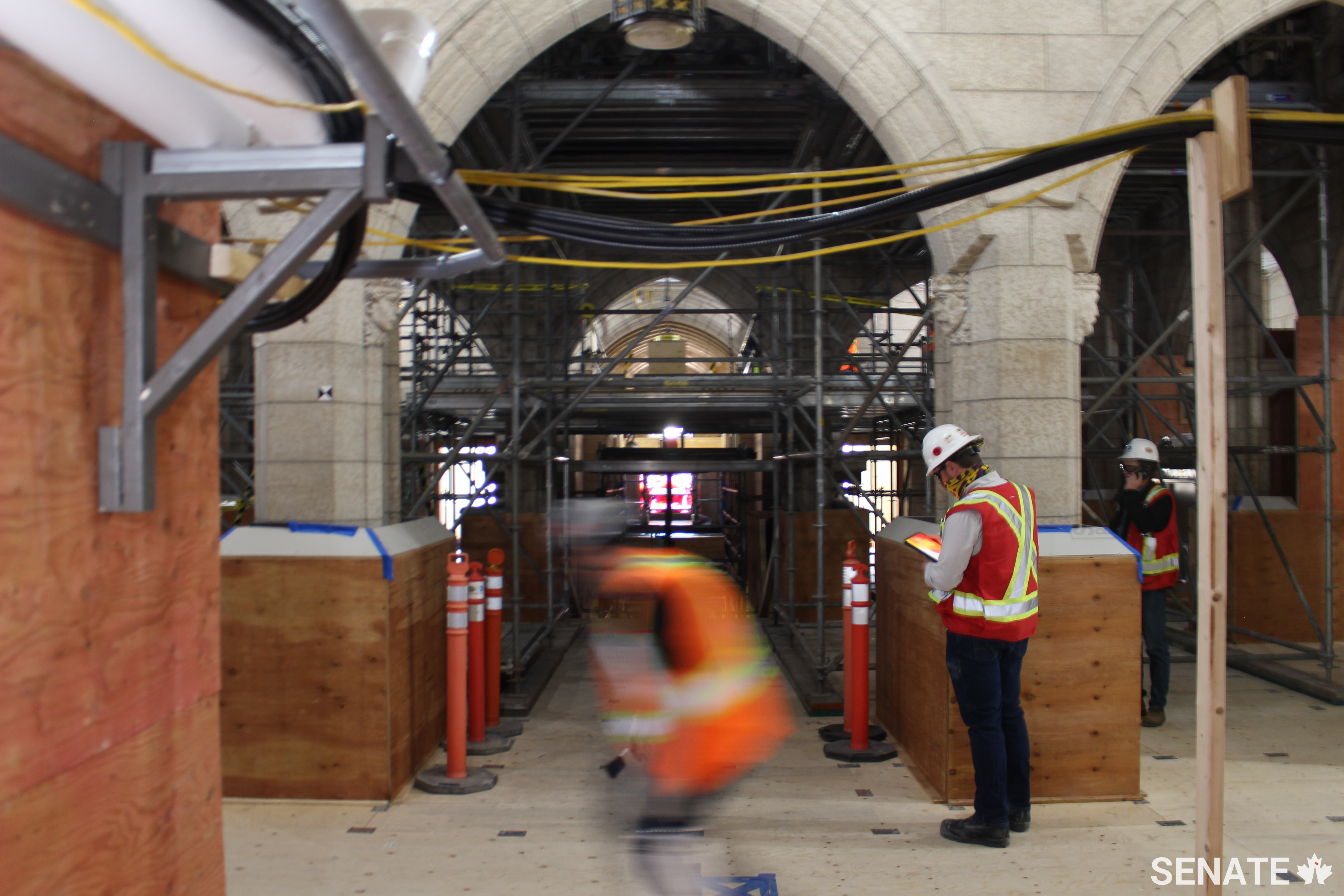 The Senate foyer looks a bit different than it used to. Plywood cladding has been used to protect Centre Block’s historic features during rehabilitation work, and scaffolding is everywhere. The Diamond Jubilee Window is just visible as a soft glow in the centre of the frame.
The Senate foyer looks a bit different than it used to. Plywood cladding has been used to protect Centre Block’s historic features during rehabilitation work, and scaffolding is everywhere. The Diamond Jubilee Window is just visible as a soft glow in the centre of the frame.
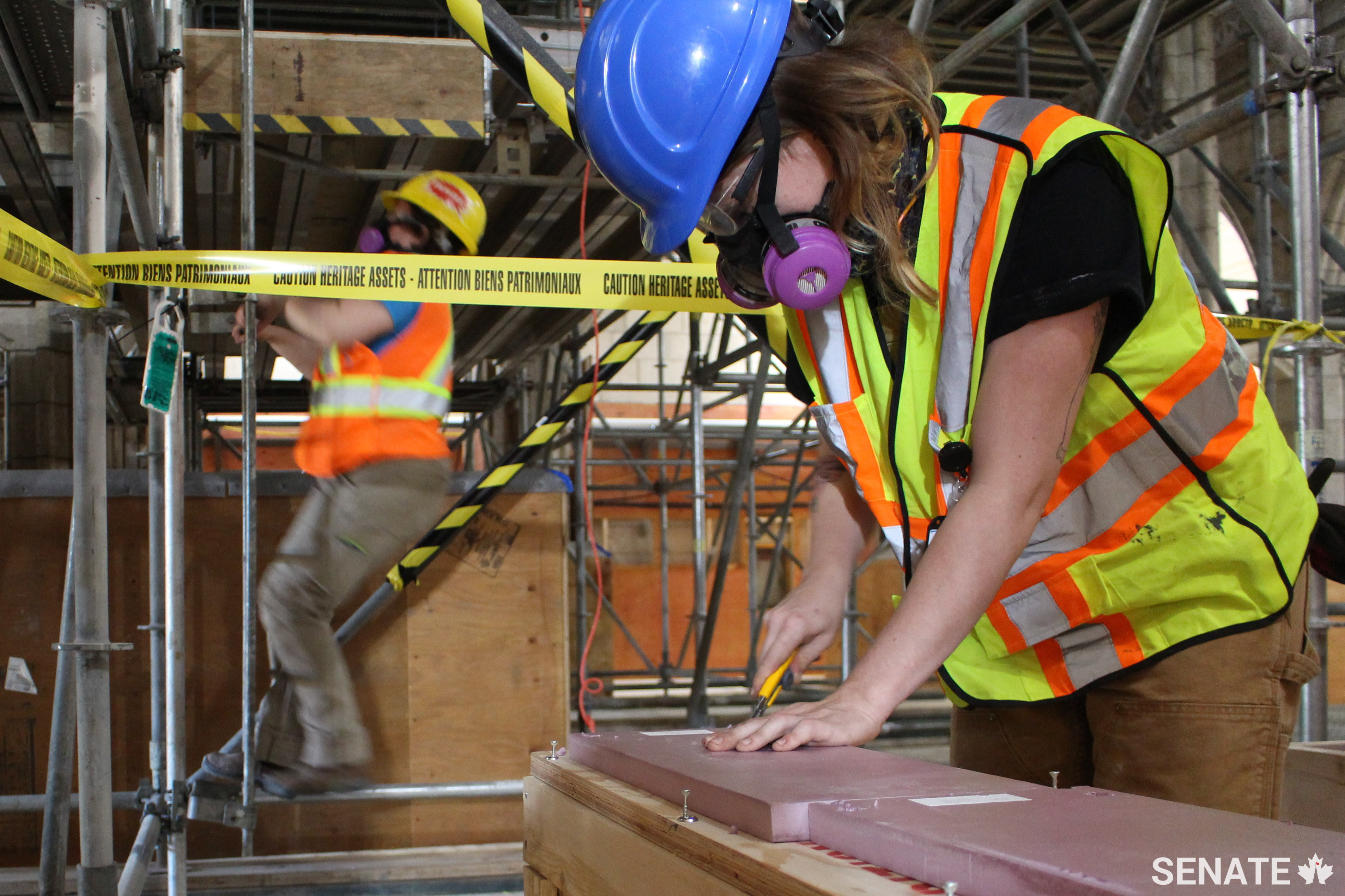
A worker trims supports to accommodate parts of the window. The window was removed in sections and fitted into wooden boxes.
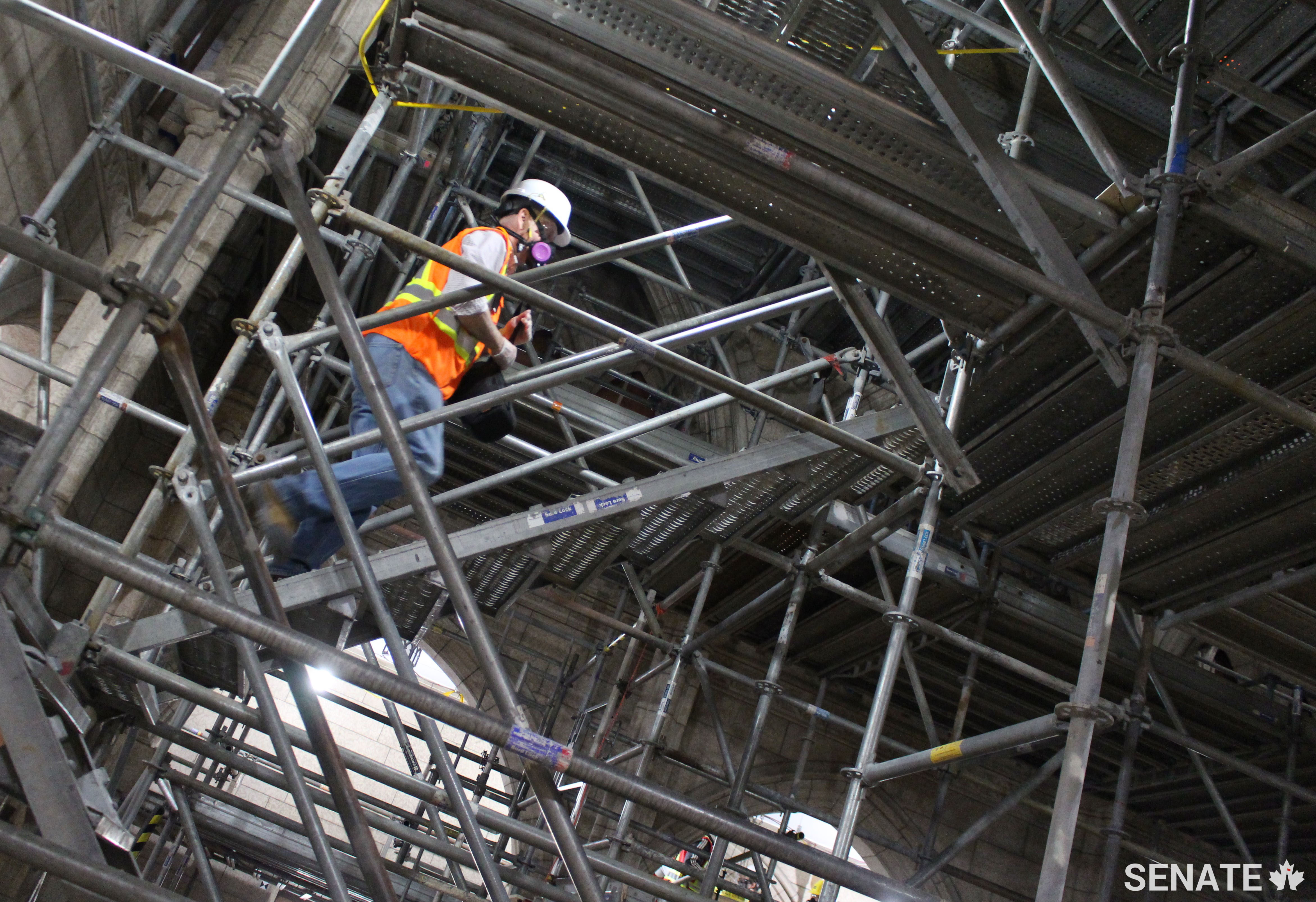
A worker navigates a maze of scaffolding to access the jubilee window.
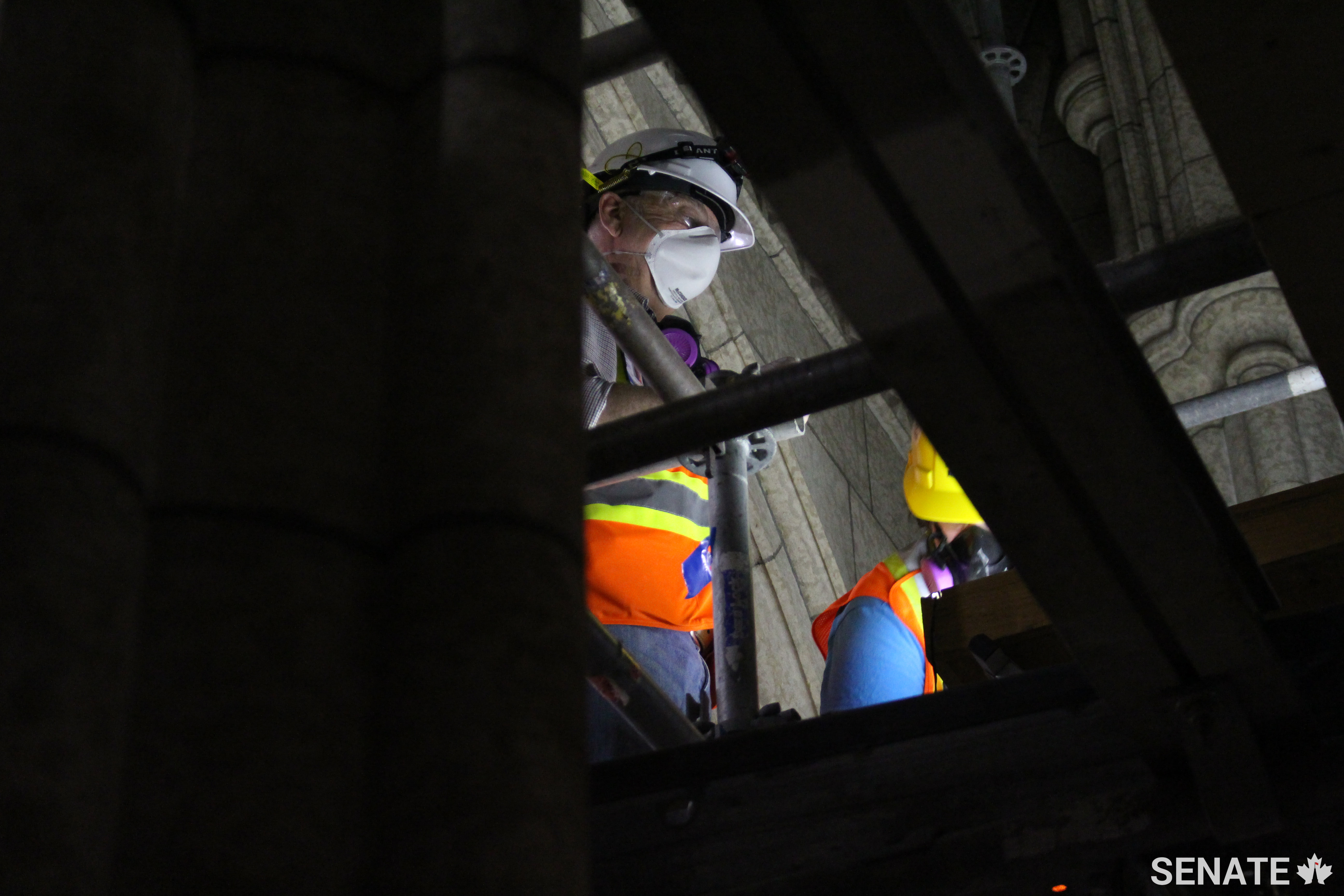
Mark Thompson, principal at Traditional Glassworks, directs the removal of the jubilee window from a staging area atop a nest of scaffolding. “We remove the panels very carefully … then we take a series of photographs from both sides,” he said. “They’re very carefully wrapped in Tyvek and bubble wrap and plastic bags, and then they’re crated and labelled.”
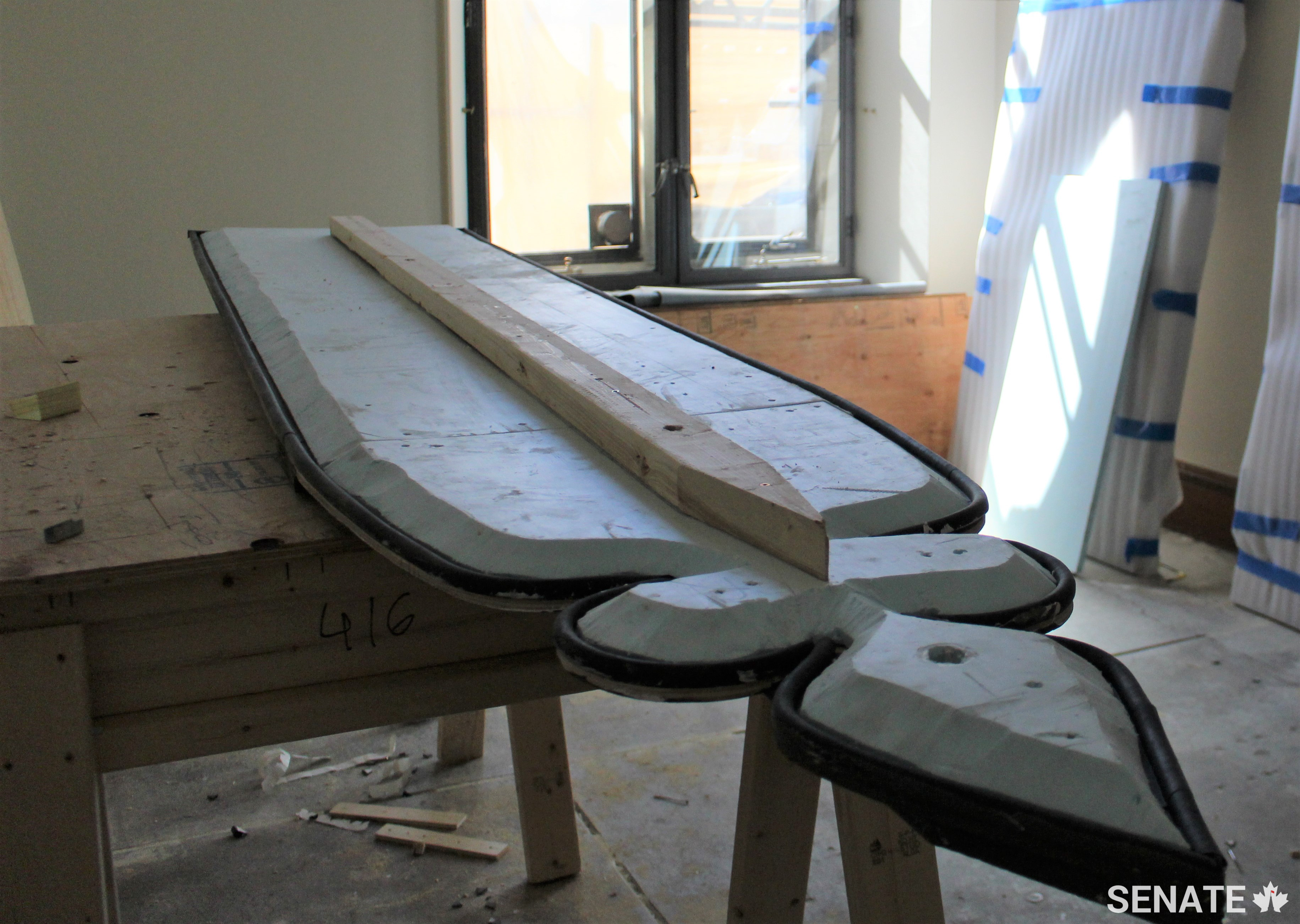
Each section of the window was replaced by custom-made wooden inserts to prevent wind, dust and rain from entering Centre Block.
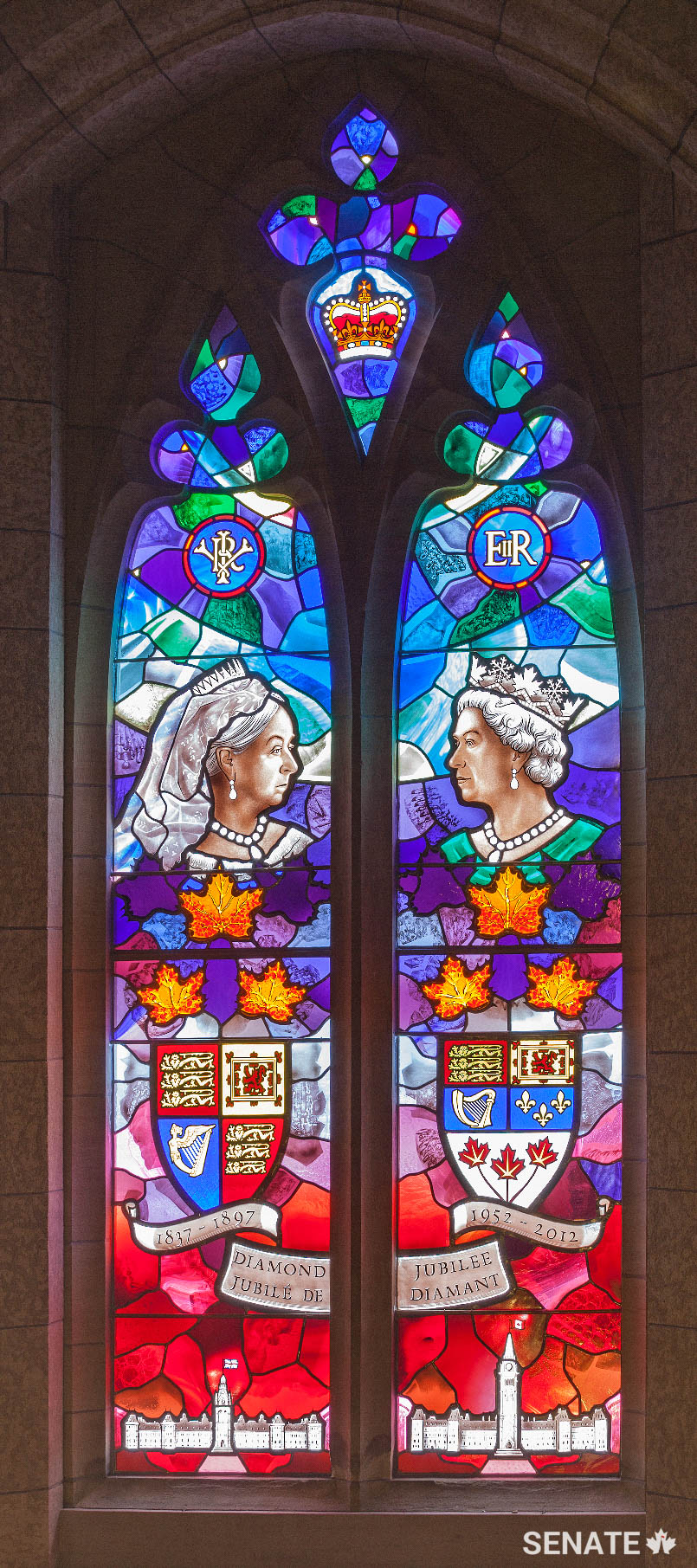
The Diamond Jubilee Window in all its glory. Queen Victoria, left, faces Queen Elizabeth II. Look closely at the bottom — Centre Block is shown beneath both queens, but the tower below Queen Victoria is smaller. Why? Because it shows the aptly named Victoria Tower, which crowned the original Centre Block. That building burned down in 1916 and was replaced with the current building and its landmark Peace Tower, which is shown below Queen Elizabeth II.
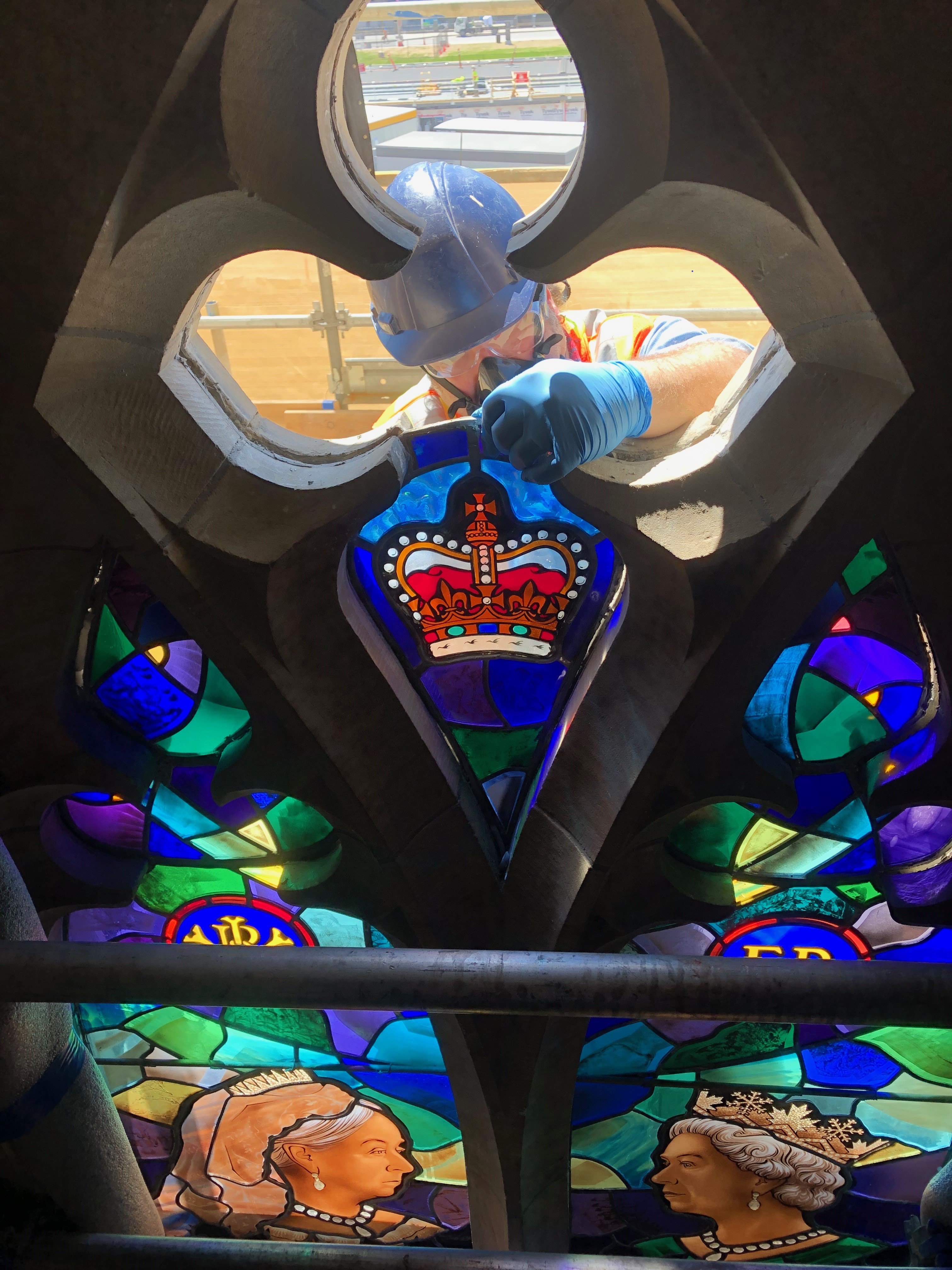
A worker carefully eases a section of the window from its frame. (Photo credit: Public Services and Procurement Canada)
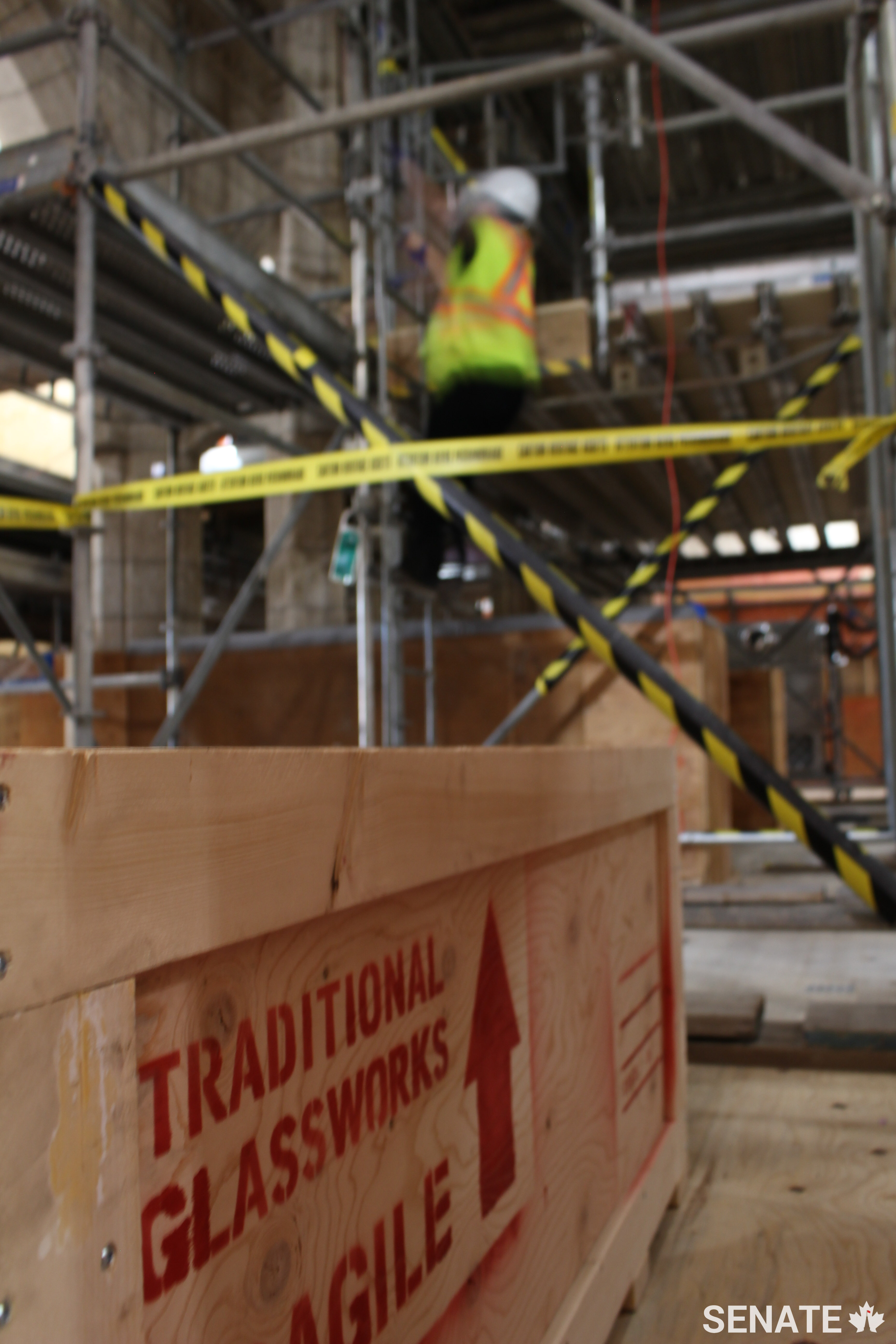
A worker returns to the scaffolding as the first section of the jubilee window nestles safely in its wooden box. The window proved to be in good shape — all it needs is a light vacuum with a soft brush and a gentle rub clean with a cotton cloth.


